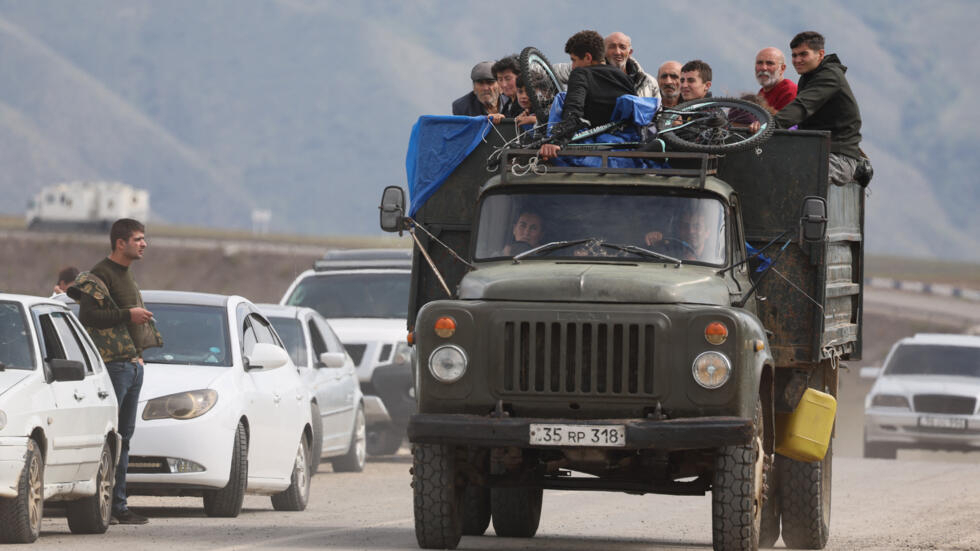Armenia has reported an alarming influx of over 28,000 refugees fleeing the conflict-ridden Nagorno-Karabakh region. This surge in displaced individuals comes in the wake of escalating hostilities initiated by Azerbaijan’s military incursion, accompanied by artillery strikes, aimed at forcefully quelling the breakaway enclave. As the crisis deepens, the Armenian government’s commitment to ensuring the safe evacuation of all residents becomes increasingly crucial, despite tragic setbacks along the way.
Tragedy Strikes as Refugees Flee
The flight of Nagorno-Karabakh’s inhabitants, seeking refuge from the horrors of war, was marred by a tragic incident. An explosion at a fuel depot on Monday unleashed devastation, claiming the lives of 68 individuals, with an additional 105 still unaccounted for and nearly 300 others left injured. Shockwaves rippled through the region as this incident added a grim layer to an already dire humanitarian situation. Karabakh’s ombudsman reported that 68 of the injured were swiftly transported to medical facilities in Armenia. Astonishingly, the authorities remain silent regarding the cause of the explosion, leaving many questions unanswered.
International Calls for Ceasefire
The conflict, which erupted on September 19, prompted a global outcry, with prominent figures on the world stage calling for an immediate cessation of hostilities. UN Secretary-General Antonio Guterres emphatically appealed for an “immediate end to the fighting” in the Nagorno-Karabakh region. In a synchronized response, the Russian Foreign Ministry issued a statement urging both Armenia and Azerbaijan to halt the bloodshed and return to the implementation of a ceasefire agreement. The international community’s concern underscores the gravity of the situation and the urgent need for diplomatic resolution.
Decades-Long Turmoil in Nagorno-Karabakh
The current turmoil in Nagorno-Karabakh underscores a protracted conflict that has spanned decades. Armenia and Azerbaijan have remained locked in a bitter dispute over the mountainous region since 1988. While peace talks have intermittently taken place since 1994, when a ceasefire was initially brokered, sporadic clashes have continued to disrupt the fragile peace. The situation escalated dramatically on September 27, 2020, when a fresh bout of major armed conflict erupted along the contact line. It wasn’t until November 9, 2020, that Russia brokered a new ceasefire agreement, yet tensions have endured, simmering just beneath the surface.
In conclusion, as Armenia grapples with an unprecedented influx of refugees escaping the horrors of the Nagorno-Karabakh conflict, the international community’s call for a ceasefire becomes increasingly urgent. The tragic explosion at a fuel depot has added another layer of sorrow to this already dire humanitarian crisis, underscoring the need for swift and decisive action to end the hostilities. With a history of decades-long turmoil in the region, a lasting solution remains elusive, but the plight of the innocent civilians caught in the crossfire demands immediate attention and action from the global community.
















